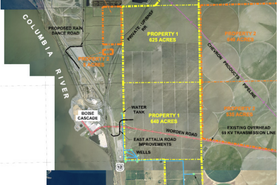Over the past decade, hyperscale cloud providers have reshaped enterprise IT strategies, promising flexibility, scalability, and cost efficiency. The perception has been that businesses were moving away from private infrastructure in favor of cloud-based models, driven by a need for agility in an increasingly digital world. However, this transition has not been as absolute as once predicted.
In Uptime’s 2020 annual data center survey, respondents reported that, on average, 58 percent of their organization’s IT workloads were hosted in corporate data centers. In 2023, this percentage fell to 48 percent, with respondents forecasting that 43 percent of workloads would still be hosted in corporate data centers in 2025.
Public cloud adoption has undoubtedly transformed enterprise IT, but the assumption that private cloud and colocation are outdated models is proving incorrect. Many businesses are now reconsidering their IT strategies, recognizing that an optimal approach often involves a blend of public and private infrastructure. Rather than a binary choice, enterprises are adopting hybrid and multi-cloud strategies to balance control, performance, and cost-effectiveness.
Whilst hyperscalers offer unparalleled scalability, they don’t always provide the most cost-effective or secure option for every type of workload. The ongoing focus on private cloud and colocation reflects the growing understanding that businesses must tailor their infrastructure to suit specific operational and regulatory needs. Compliance requirements, cost predictability, and performance optimization remain critical considerations that drive enterprises toward private infrastructure solutions.
Beyond the hype: The real cost of public cloud
Public cloud’s appeal lies in its flexibility. Businesses can scale resources up or down on demand, benefiting from its vast infrastructure and eliminating upfront capital expenditures. However, this agility comes at a price. Enterprises that initially embraced cloud-first strategies are now confronting unexpected cost challenges. The "pay-as-you-go" model, while advantageous for variable workloads, can quickly become cost-prohibitive for organizations with stable, high-volume computing needs.
In contrast, private cloud and colocation models provide more predictable pricing structures, enabling enterprises to plan for long-term efficiency. Many organizations are finding that repatriating certain workloads back to private infrastructure results in substantial cost savings, particularly in industries where computing demands remain consistent over time. Studies indicate that enterprises shifting AI and analytics workloads to private infrastructure can reduce overall expenses by 30 percent or more, underscoring the cost benefits of hybrid models.
AI's infrastructure demands: Rethinking IT architecture
Artificial intelligence (AI) is fundamentally reshaping enterprise computing. The explosion of machine learning, deep learning, and real-time analytics workloads has introduced new infrastructure challenges that the public cloud alone cannot always address.
AI training models, for example, require immense computational power and low-latency processing. Public cloud providers offer AI-as-a-service solutions, but these are often prohibitively expensive for businesses running continuous, large-scale AI workloads. Instead, enterprises are turning to colocation and private cloud environments to build AI-optimized infrastructure with dedicated graphics processing unit (GPU) clusters, high-speed networking, and custom cooling solutions.
Take the financial services sector as an example: many organizations developing proprietary AI models prefer to operate within colocation facilities, where they can maintain data security, meet compliance requirements, and achieve consistently high performance - all without incurring unpredictable cloud costs. Similarly, pharmaceutical companies conducting advanced drug discovery and genomics research require infrastructure that meets strict regulatory and security requirements, making private cloud and colocation highly attractive options.
The rise of hybrid and multi-cloud strategies
The IT landscape is no longer defined by a binary choice between public and private cloud. Instead, enterprises are embracing hybrid and multi-cloud architectures, leveraging different environments based on specific workloads. This approach allows businesses to optimize for cost, performance, and regulatory compliance without being locked into a single provider’s ecosystem.
Colocation has become a critical enabler of this strategy, offering direct interconnections to major cloud providers while allowing businesses to retain control over sensitive workloads. The ability to seamlessly integrate on-premises, colocation, and public cloud resources ensures enterprises have the agility to adapt to evolving technology and business needs. Hybrid models also help mitigate vendor lock-in, ensuring businesses can switch providers or reallocate workloads based on changing financial or operational requirements.
Sustainability pressures are changing the conversation
Sustainability is now a key consideration for IT leaders. According to the IEA, data centers account for around one percent of global electricity consumption today, and annual electricity consumption from data centers globally is about half of the electricity consumption from household IT appliances, like computers, phones, and TVs. And, with data centers accounting for a growing share of global energy consumption, enterprises are under pressure to adopt greener strategies. Colocation providers are at the forefront of these efforts, investing in renewable energy sources, liquid cooling technologies, and waste heat recovery systems to drive efficiency and reduce carbon footprints.
Additionally, enterprises that prioritize sustainability can leverage colocation providers’ economies of scale to meet their environmental goals faster and more effectively than maintaining their own facilities. As regulatory requirements tighten and stakeholders demand greater accountability, businesses will increasingly favor data center partners with demonstrable sustainability commitments.
The push for green energy solutions is also driving technological innovation. For example, AI-powered energy management systems are being deployed to optimize cooling and reduce power consumption in real time, enhancing both environmental and operational efficiency.
Colocation's role in future-proofing enterprise IT
So, far from being a legacy option, colocation is evolving into a vital component of modern IT infrastructure. The next generation of colocation facilities is being designed with AI, high-performance computing, and Edge workloads in mind, providing:
- Customizable infrastructure: Enterprises can build environments tailored to AI, HPC, and other demanding applications.
- Interconnected ecosystems: Proximity to cloud on-ramps enables seamless hybrid cloud strategies.
- Scalability without heavy capital investment: Businesses can expand capacity as needed without the financial burden of constructing new facilities.
- Resilience and security: Redundant power and cooling systems, as well as robust physical security, ensure uptime for critical workloads.
Looking ahead: The future of enterprise data centers
Enterprise IT is undergoing a shift - one where public cloud is not the default solution for every workload. Instead, businesses are making deliberate, strategic choices, about where to place their workloads based on a mix of cost, performance, security, and sustainability considerations.
In this evolving landscape, private cloud and colocation remain highly relevant, offering control and efficiency that hyperscalers alone cannot match. The integration of AI-driven workload management, enhanced interconnectivity, and next-generation cooling solutions will further elevate the role of colocation in the future of enterprise computing.
The businesses that will thrive in the AI-driven era are those that build flexible, future-proof IT architectures - leveraging the best of both worlds to maintain cost control, compliance, and competitive advantage.




